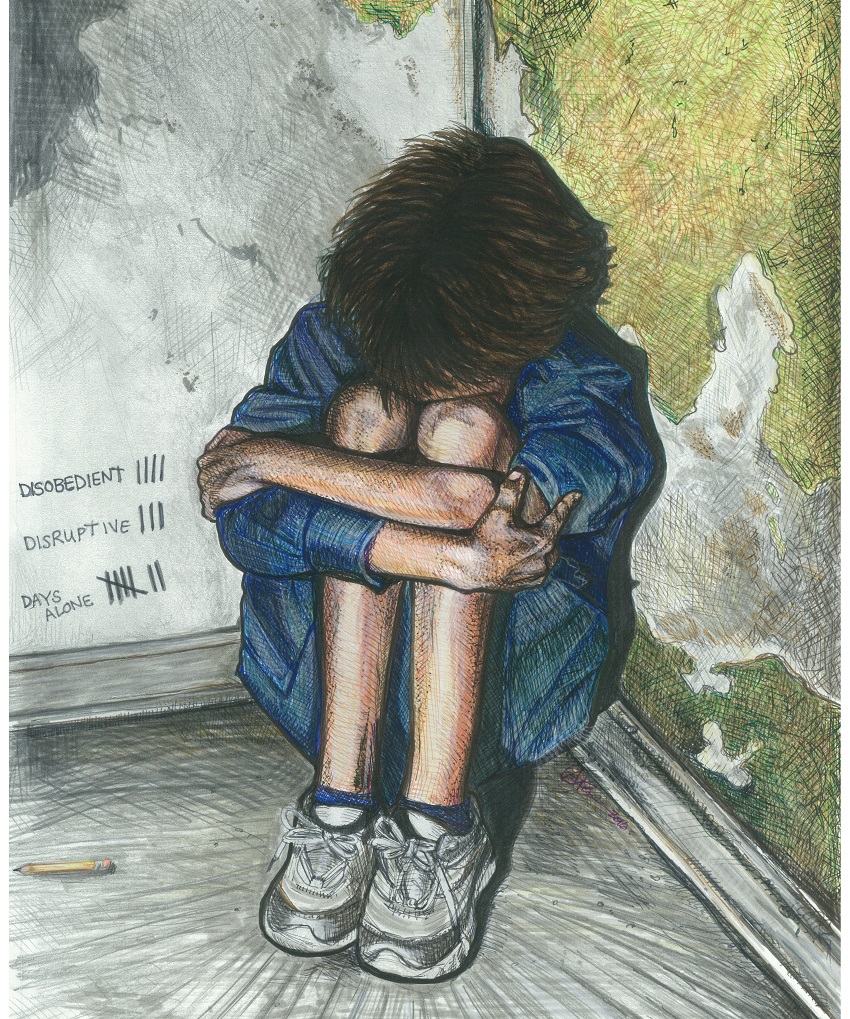Militarization and Excessive Discipline in Schools
Punishment is by definition unpleasant, but many would agree that it is necessary in order to prevent people from doing things that harm others. However, its implementation is opposed by a variety of experts. The late psychologist B.F. Skinner, known for developing a field of psychology that looks at how reinforcement and punishment influence behavior, declares, “A person who has been punished is not thereby less inclined to behave in a given way; at best, he learns to avoid punishment.” Educational expert Alfie Kohn, whose egalitarian views radically differ from Skinner’s, takes this criticism further to say, “Punishment doesn’t teach what not to do, much less the reason not to do it: what it really teaches is the desire to avoid punishment.”
Indeed, while in many cases punishment may be necessary, extreme versions of punishment are used and abused far too often. The K-12 school system is a prime example.
Efforts to tighten control over students have led to increased contact with the criminal justice system. Police officers, euphemistically termed “school resource officers” or SROs, have become commonly placed throughout schools, ostensibly to protect students. However, only 12 states require that they be trained in juvenile justice issues, which leads to unnecessary and sometimes violent disciplinary interventions that disproportionately target black and disabled students. In Birmingham, Alabama, for instance, SROs were sued for spraying 199 students with pepper spray between 2006 and 2014 over minor disciplinary issues. In a similar, more prominent incident, one black student in South Carolina was flung across the room because she used her cell phone in class.
Panic over school shootings, combined with harsh attitudes that accompanied the War on Drugs, also encouraged the adoption of “zero-tolerance” policies, under which anything perceived as even the tiniest violation of a rule is grounds for severe discipline. One first grader was suspended for making finger guns with his hands, while a 12-year-old was charged with a felony for bringing powdered sugar to school because it looked like a drug.
Again, these policies have a racial element to them. A study by the federal government found that seven out of 10 students suspended during the 2010-2011 school year were Black and/or Latino. An Indiana University study showed that Black students are more likely to be suspended or expelled for offenses like lateness and “disruption,” while white students generally face these punishments only for more severe behavior. Zero-tolerance policies allow officials to justify these penalties, by claiming that minor behavior falls under more serious categories: in one instance, a Black student was suspended for a pose that represented his football team because officials claimed it was a “gang sign.”
Strangely, students are punished for missing school, yet forced to miss school as punishment. According to a 2013 report by the Civil Rights Project at UCLA, although getting suspended once in ninth grade doubles a student’s chance of dropping out, schools continue to use this as punishment, with an estimated more than two million suspensions each year.
These issues are exacerbated by government pressures on teachers and school administrators. Test scores have been viewed as an accurate measure of teachers’ and schools’ success ever since the implementation of the wildly unpopular No Child Left Behind Act. The act was repealed in 2014 but its replacement, the Every Student Succeeds Act, adds even more testing requirements and continues to require states to evaluate schools based on test scores. Teachers’ pay also can be determined by test scores. Under these conditions, “if a student acts up in class, it is no longer in the educators’ self-interest to address it by assessing the student’s unmet needs or treating the incident as a ‘teachable moment,’ ” explains a report by the civil rights organization Advancement Project. “It is much easier and more ‘efficient’ to simply remove the child from class through punitive disciplinary measures and focus on the remaining students.”
In order to tackle this issue at the root, we must equitably and adequately fund schools, and not reward or punish them based on test performance. This will ease financial pressures on teachers, and will encourage the creation of policies that value students as autonomous beings instead of numbers on a test. Fighting systematic racism and ableism will also help disabled students and students of color from being subject to discriminatory discipline and violence, as will tackling the for-profit prison industry that encourages students to be pushed into the criminal justice system. Finally, we need to dismantle zero-tolerance policies that allow students to be punished for non-issues, properly train school security workers, and ensure that they do not interfere in routine discipline but instead act only when necessary.







